UI/UX Designer Interview Questions
Preparing for a UI/UX designer interview requires a solid knowledge of both user interface and user experience principles. Whether you’re a newbie, experienced professional, or transitioning into this field, this guide provides a comprehensive list of UI/UX designer interview questions to help you succeed in your next interview.

Introductory Phase (About You)
1. Can you tell us a bit about yourself?
2. Why did you choose UI/UX design as a career?
3. What excites you most about this role?
4. What are your strengths as a designer?
5. What do you enjoy doing outside of work or studies?
Background and Experience
1. Have you worked on any UI/UX design projects? Can you describe one?
2. What design tools have you used?
3. Have you ever conducted user research? How did you approach it?
4. What is your favorite project you’ve worked on, and why?
5. How do you stay updated with UI/UX design trends?
Technical/Tools Expertise (Role-Specific Skills)
1. What do you know about wireframes and prototypes?
2. What is the difference between UX design and UI design?
3. How do you ensure consistency in your designs?
4. What is your approach to creating a user-friendly navigation menu?
5. How do you choose colors and typography for a design?
Behavioral and Situational UI/UX Designer Interview Questions
1. How do you handle tight deadlines for design projects?
2. What would you do if a client rejected your design?
3. Describe a time when you worked as part of a team.
4. How do you handle feedback or criticism on your designs?
5. What would you do if a user test revealed flaws in your design?
Critical Thinking-Based UI/UX Designer Interview Questions
1. How would you design a simple landing page?
2. What steps would you take to redesign an outdated website?
3. What would you do if a website’s bounce rate was too high?
4. How do you balance aesthetics and usability in your designs?
5. What would you do if a client wanted a feature you thought wasn’t user-friendly?
Performance-Based UI/UX Designer Interview Questions
1. Can you create a wireframe for a mobile app’s homepage?
2. Can you design a responsive navigation menu?
3. Can you explain your design choices for a given project?
4. How would you test a prototype for usability?
5. Can you improve an existing design?
Problem-Solving and Analytical Thinking UI/UX Designer Interview Question
1. What would you do if your design wasn’t user-friendly?
2. How do you handle conflicting design feedback from stakeholders?
3. What steps would you take to improve a slow-loading interface?
4. How do you ensure a website design is accessible?
5. What would you do if a design didn’t align with the user persona?
Career Growth UI/UX Designer Interview Questions
1. What do you hope to achieve in this role?
2. Where do you see yourself in 3-5 years?
3. What kind of projects inspire you?
4. Are you interested in learning more about development or research?
5. What motivates you to grow as a designer?
Introductory Phase (About You)
The first phase of the interview often focuses on your background and introduction. Providing a clear explanation of your college degree, relevant courses, motivation, and journey into the UI/UX field can help set a strong tone for the rest of the interview.
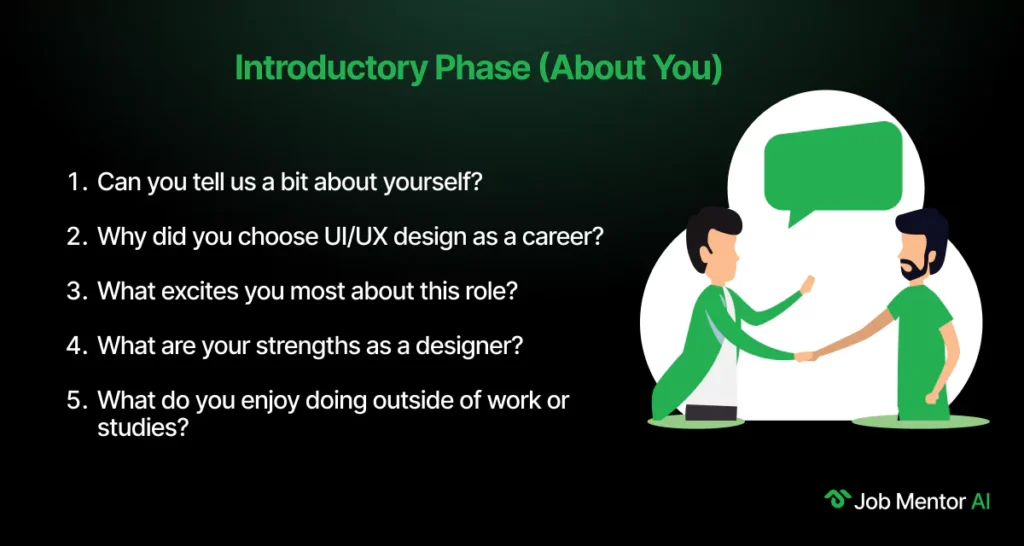
1. Can you tell us a bit about yourself?
What Interviewers Want:
A concise overview of your background, interest in UI/UX design, and any relevant experience or skills.
Strong Answer:
“I have a degree in Graphic Design and have recently completed a certification in UI/UX design, where I gained hands-on experience with tools like Figma and Adobe XD. I’m passionate about creating user-friendly designs and have worked on personal projects, such as designing a mobile app interface for a local nonprofit. I’m excited to apply my skills to real-world challenges and grow as a designer.”
Poor Answer:
“I studied Graphic Design and have some experience with tools like Figma and Adobe XD. I’m looking for a role to gain more experience in UI/UX.”
2. Why did you choose UI/UX design as a career?
What Interviewers Want:
A genuine reason demonstrating your passion for creating user-centric and visually appealing designs.
Strong Answer:
“I’ve always been drawn to the intersection of creativity and problem-solving. UI/UX design allows me to combine these passions by creating intuitive, visually appealing interfaces that make a difference in people’s lives. I enjoy the challenge of understanding user needs and translating them into effective designs.”
Poor Answer:
“I enjoy designing and solving problems, so I thought UI/UX design would be a good career choice.”
3. What excites you most about this role?
What Interviewers Want:
Enthusiasm for the company’s projects, design challenges, or user-centered culture.
Strong Answer:
“I’m excited about the opportunity to work on innovative projects that prioritize user experience. I admire how your company focuses on creating products that are both functional and visually appealing, and I’m eager to contribute my design skills while learning from a talented team.”
Poor Answer:
“I’m excited to work on interesting projects and learn more about UI/UX design.”
4. What are your strengths as a designer?
What Interviewers Want:
Confidence in skills like creativity, attention to detail, problem-solving, and user empathy.
Strong Answer:
“My strengths include creativity, attention to detail, and user empathy. For example, in a recent project, I conducted user interviews to understand their pain points and designed an interface that simplified a complex process. I also have a strong foundation in tools like Figma and Adobe XD, which allows me to create polished prototypes efficiently.”
Poor Answer:
“My strengths are creativity, attention to detail, and being good at using design tools like Figma.”
5. What do you enjoy doing outside of work or studies?
What Interviewers Want:
Insight into hobbies or activities that reflect creativity, curiosity, or a focus on understanding people.
Strong Answer:
“I enjoy sketching and experimenting with digital art, which helps me stay creative. I’m also interested in psychology and often read about human behavior to better understand user needs. Additionally, I love exploring new apps and websites to analyze their design and functionality.”
Poor Answer:
“I enjoy drawing and learning about new apps and websites.”
Background and Experience
When you are summarizing your professional journey, highlight notable design projects, tools used, specific challenges faced during the design process, and how you effectively tackled those problems. If possible, explain how your experience can add value to the company.
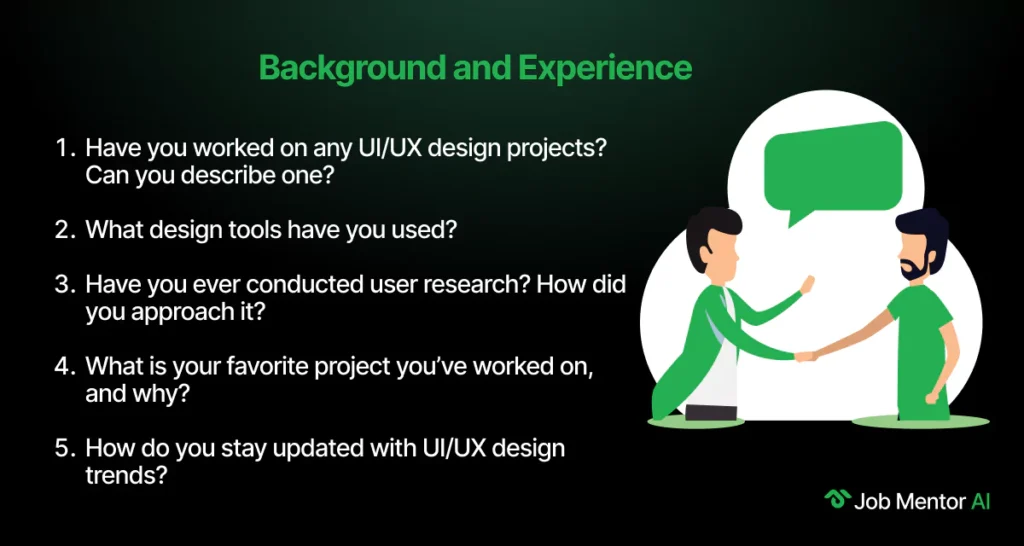
1. Have you worked on any UI/UX design projects? Can you describe one?
What Interviewers Want:
Examples of projects showcasing problem-solving, creativity, and understanding of user needs.
Strong Answer:
“Yes, I recently designed a mobile app interface for a local nonprofit to help users easily schedule volunteering opportunities. I started with user research, conducting interviews to understand their needs. Based on the insights, I created wireframes in Figma and tested a prototype with potential users. This process helped refine the design, resulting in a user-friendly interface that increased volunteer sign-ups by 20% after launch.”
Poor Answer:
“I worked on designing an app for a nonprofit. I created wireframes and made it easy for users to sign up for events.”
2. What design tools have you used?
What Interviewers Want:
Familiarity with tools like Figma, Sketch, Adobe XD, or InVision.
Strong Answer:
“I’ve worked extensively with Figma and Adobe XD for wireframing and prototyping. I’ve also used Sketch for creating UI components and InVision for presenting interactive prototypes to stakeholders. Additionally, I use tools like Miro for brainstorming and Adobe Photoshop for graphic assets.”
Poor Answer:
“I’ve used Figma, Adobe XD, and Sketch for designing and prototyping.”
3. Have you ever conducted user research? How did you approach it?
What Interviewers Want:
Basic understanding of user research methods like interviews, surveys, or usability testing.
Strong Answer:
“Yes, for a website redesign project, I conducted user interviews to understand pain points and goals. I also created a survey to collect quantitative data from a broader audience. After analyzing the data, I identified key insights, such as users struggling with navigation, and incorporated solutions like a simplified menu structure and clearer labels into the design.”
Poor Answer:
“I’ve conducted interviews and surveys to understand what users want and improve the design.”
4. What is your favorite project you’ve worked on, and why?
What Interviewers Want:
Passion for a project and your reasoning behind design choices.
Strong Answer:
“My favorite project was designing a task management app for students. It was rewarding to create a solution that simplified their workflow and helped them manage deadlines. I enjoyed the challenge of balancing functionality with an intuitive interface. Seeing positive feedback from users during testing was incredibly motivating.”
Poor Answer:
“I enjoyed working on a task management app because it was fun to design and useful for users.”
5. How do you stay updated with UI/UX design trends?
What Interviewers Want:
Commitment to continuous learning through blogs, communities, or industry events.
Strong Answer:
“I regularly follow design blogs like Smashing Magazine and UX Collective, and I participate in design communities on platforms like Dribbble and Behance. I also take online courses and attend webinars to learn about emerging tools and techniques, such as motion design or accessibility best practices.”
Poor Answer:
“I follow blogs like UX Collective and look at designs on Dribbble to stay updated.”
Technical/Tools Expertise UI/UX designer Interview Questions
Some technical role-specific questions asked during a UI/UX designer interview are listed below. Use AI Interview Assistant for mock interview practice and generate questions and answers to practice more technical questions before an interview.
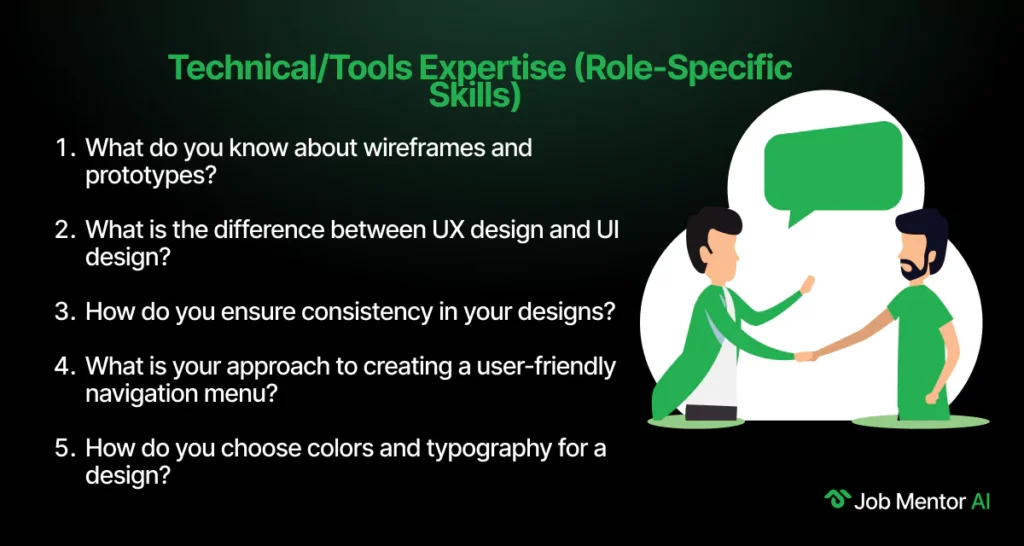
1. What do you know about wireframes and prototypes?
What Interviewers Want:
Understanding of their role in planning and communicating design ideas.
Strong Answer:
“Wireframes are low-fidelity designs that outline the structure and layout of a page, focusing on functionality rather than aesthetics. Prototypes are interactive, high-fidelity versions that simulate the user experience and allow for usability testing. Both are essential for communicating ideas and gathering feedback before development begins.”
Poor Answer:
“Wireframes show the layout of a page, and prototypes are more detailed versions of the design.”
2. What is the difference between UX design and UI design?
What Interviewers Want:
Clarity on the distinction between user experience and user interface design.
Strong Answer:
“UX design focuses on the overall user experience, including usability, accessibility, and the journey through a product. UI design, on the other hand, deals with the visual and interactive elements, such as colors, typography, and buttons. While UX ensures the product is functional and intuitive, UI makes it visually appealing and engaging.”
Poor Answer:
“UX is about the experience, and UI is about the look of the product.”
3. How do you ensure consistency in your designs?
What Interviewers Want:
Awareness of design systems, style guides, and reusable components.
Strong Answer:
“I use design systems and style guides to maintain consistency across components, including colors, typography, and spacing. Tools like Figma and Sketch allow me to create reusable components, ensuring uniformity across the project. Regular reviews with the team also help catch inconsistencies early.”
Poor Answer:
“I use design systems and components to make sure everything looks consistent.”
4. What is your approach to creating a user-friendly navigation menu?
What Interviewers Want:
A focus on simplicity, usability, and user flow.
Strong Answer:
“I focus on simplicity by limiting menu options to what’s most important and grouping related items logically. I use clear labels and ensure the menu is easily accessible on all devices. Testing the navigation with real users helps identify and resolve pain points.”
Poor Answer:
“I keep the menu simple and easy to use with clear labels.”
5. How do you choose colors and typography for a design?
What Interviewers Want:
Knowledge of color theory, branding, and readability considerations.
Strong Answer:
“I consider the brand’s identity and target audience when selecting colors and typography. I use color theory to create a harmonious palette that guides attention and ensures readability. For typography, I prioritize legibility, choosing font styles and sizes that align with the product’s tone and purpose.”
Poor Answer:
“I pick colors that look good together and fonts that are easy to read.”
6. What is your experience with responsive design?
What Interviewers Want:
Ability to design for different devices and screen sizes.
Strong Answer:
“I design layouts that adapt to various screen sizes using grid systems and flexible components. I use tools like Figma’s auto-layout feature to preview how designs will look on different devices. Testing on multiple devices ensures that the experience is consistent and user-friendly.”
Poor Answer:
“I design layouts that work on different screen sizes and test them to make sure they’re responsive.”
7. Have you worked with usability testing tools?
What Interviewers Want:
Familiarity with tools like Maze, Optimal Workshop, or UserTesting.
Strong Answer:
“Yes, I’ve used tools like UserTesting and Maze to gather feedback on prototypes. These tools help identify usability issues by analyzing user interactions, which I use to iterate and improve the design.”
Poor Answer:
“I’ve used testing tools to see how users interact with designs and make improvements.”
8. What is your process for creating user personas?
What Interviewers Want:
Understanding of how personas help represent user goals and behaviors.
Strong Answer:
“I start by gathering data through user research, including interviews, surveys, and analytics. I identify patterns in user behaviors, goals, and pain points and use this information to create personas that represent key audience segments. These personas guide design decisions and ensure we address user needs effectively.”
Poor Answer:
“I gather data from users and create personas based on their needs and goals.”
9. Can you explain the concept of user journey mapping?
What Interviewers Want:
Awareness of how mapping helps visualize user interactions with a product.
Strong Answer:
“User journey mapping visualizes the steps a user takes to interact with a product, highlighting their emotions, pain points, and goals at each stage. This helps identify areas where the experience can be improved, ensuring a smoother and more satisfying journey for the user.”
Poor Answer:
“User journey mapping shows the steps users take and helps improve their experience.”
10. What do you know about accessibility in design?
What Interviewers Want:
Understanding of designing for users with disabilities, including WCAG guidelines.
Strong Answer:
“Accessibility ensures that designs are usable by everyone, including people with disabilities. I follow WCAG guidelines, such as maintaining proper color contrast, providing alt text for images, and ensuring keyboard navigability. Testing with accessibility tools like Axe helps identify and fix issues.”
Poor Answer:
“Accessibility makes designs usable for everyone, and I follow guidelines to make sure it’s accessible.”
11. How do you prioritize user needs in your design?
What Interviewers Want:
Awareness of user-centered design principles.
Strong Answer:
“I prioritize user needs by conducting research to understand their goals and pain points. I use methods like usability testing and analytics to validate assumptions and focus on features that provide the most value. Balancing user feedback with business objectives ensures the design meets both user and company goals.”
Poor Answer:
“I focus on what users need most based on feedback and research.”
12. What is your process for creating an intuitive layout?
What Interviewers Want:
A structured approach to organizing content and guiding users visually.
Strong Answer:
“I start by understanding the user’s goals and flow, then organize content hierarchically based on importance. I use visual cues like headings, spacing, and alignment to guide users and ensure elements are logically grouped. Testing the layout with users helps confirm its intuitiveness.”
Poor Answer:
“I organize content in a way that makes sense and is easy for users to navigate.”
13. What is the role of whitespace in UI design?
What Interviewers Want:
Awareness of how whitespace improves clarity and focus.
Strong Answer:
“Whitespace improves readability and focus by creating separation between elements. It helps users process information more easily and contributes to a clean, professional design. Proper use of whitespace enhances the overall user experience by reducing cognitive load.”
Poor Answer:
“Whitespace makes designs cleaner and easier to read.”
14. What is your experience with design handoff to developers?
What Interviewers Want:
Familiarity with tools like Zeplin or Figma and collaboration with development teams.
Strong Answer:
“I use tools like Zeplin or Figma to ensure developers have access to design specifications, including spacing, colors, and assets. I also maintain open communication to clarify requirements and address questions during development. This ensures the final product aligns with the design vision.”
Poor Answer:
“I share design files with developers and explain any details they need to know.”
15. How do you gather and incorporate user feedback into your designs?
What Interviewers Want:
Ability to iterate based on constructive feedback.
Strong Answer:
“I collect feedback through usability testing, surveys, and interviews. I analyze the feedback to identify patterns and prioritize changes based on user impact. For example, when users struggled with a feature in a prototype, I simplified the flow and tested the revised version to ensure it addressed their concerns.”
Poor Answer:
“I gather feedback from users and make changes to improve the design based on their input.”
Behavioral and Situational UI/UX Designer Interview Questions
These questions are asked to get insight into how a candidate approaches decision-making in real-life scenarios. Quick thinking and the ability to take reliable action that yields a positive outcome are valued by the interviewer.

1. How do you handle tight deadlines for design projects?
What Interviewers Want:
Time management and prioritization skills.
Strong Answer:
“I prioritize tasks by focusing on the most critical elements first, ensuring the design meets the project’s goals. I communicate with the team to align expectations and identify areas where we can streamline the process. If necessary, I simplify designs while maintaining functionality to meet the deadline without compromising quality.”
Poor Answer:
“I focus on finishing the important parts of the design first and work quickly to meet the deadline.”
2. What would you do if a client rejected your design?
What Interviewers Want:
Willingness to listen, accept feedback, and make necessary adjustments.
Strong Answer:
“I’d ask the client for specific feedback to understand their concerns and expectations. Based on their input, I’d adjust the design to better align with their vision while explaining how the changes still meet user needs. This collaborative approach ensures the client feels heard and the final product achieves its goals.”
Poor Answer:
“I’d ask the client what they didn’t like and make changes based on their feedback.”
3. Describe a time when you worked as part of a team.
What Interviewers Want:
Collaboration skills and how you contributed to the team’s success.
Strong Answer:
“In a project to redesign a company’s website, I collaborated with developers and content writers to create a cohesive user experience. I worked closely with the writers to ensure the content aligned with the design and held regular check-ins with the developers to address any technical constraints. This teamwork helped us deliver a website that improved user engagement and received positive client feedback.”
Poor Answer:
“I worked with a team to redesign a website and made sure my designs matched their work.”
4. How do you handle feedback or criticism on your designs?
What Interviewers Want:
Openness to constructive criticism and commitment to improvement.
Strong Answer:
“I view feedback as an opportunity to improve. I listen carefully to understand the critique and ask clarifying questions if needed. For example, when a stakeholder suggested simplifying a complex layout, I reviewed their concerns, made adjustments, and tested the new version with users, which led to a more effective design.”
Poor Answer:
“I listen to feedback and make changes to improve the design based on what people suggest.”
5. What would you do if a user test revealed flaws in your design?
What Interviewers Want:
A willingness to iterate and improve based on user feedback.
Strong Answer:
“I’d analyze the feedback to identify specific pain points and prioritize issues that impact usability. I’d collaborate with the team to brainstorm solutions and iterate on the design. For instance, after discovering users struggled with a multi-step process, I simplified the flow by reducing steps and adding clear visual cues, which improved the test results.”
Poor Answer:
“I’d make changes to the design based on the user test results to fix the flaws.”
6. Have you ever had to learn a new design tool quickly? How did you manage it?
What Interviewers Want:
Adaptability and eagerness to learn.
Strong Answer:
“Yes, I recently had to learn Figma for a team project. I started by watching tutorials and exploring its features through small practice projects. I also sought tips from colleagues who were experienced with the tool. Within a week, I felt confident enough to use it for wireframes and prototypes in the project.”
Poor Answer:
“I learned Figma by watching tutorials and practicing until I felt comfortable using it.”
7. What would you do if a stakeholder wanted to prioritize a feature you didn’t agree with?
What Interviewers Want:
Communication and negotiation skills to align goals.
Strong Answer:
“I’d discuss the feature with the stakeholder to understand their reasoning and share my perspective based on user research and design principles. If we still disagreed, I’d propose testing the feature with users or conducting a quick analysis to evaluate its impact. This ensures the decision is informed and aligned with user and business goals.”
Poor Answer:
“I’d explain my perspective and try to find a way to align with the stakeholder’s priorities.”
Critical Thinking-Based UI/UX Designer Interview Questions
Critical thinking asses your analytical and problem solving approaches. Interviewers want to see if you can find solutions to design problems by understanding user needs and making clear, practical decisions, so answer accordingly.

1. How would you design a simple landing page?
What Interviewers Want:
Logical thinking, creativity, and focus on user goals.
Strong Answer:
“I’d start by identifying the primary goal of the landing page, such as promoting a product or encouraging sign-ups. The layout would include a clear headline, supporting visuals, and a strong call-to-action above the fold. I’d use consistent branding, whitespace for focus, and ensure mobile responsiveness. Testing the page with users would help refine the design and ensure it’s effective.”
Poor Answer:
“I’d create a layout with a headline, some images, and a call-to-action that looks good and is easy to use.”
2. What steps would you take to redesign an outdated website?
What Interviewers Want:
A structured plan addressing usability, aesthetics, and functionality.
Strong Answer:
“I’d start by conducting a usability audit to identify pain points and areas for improvement. Then, I’d gather feedback from users and stakeholders to understand their needs and goals. I’d create wireframes and prototypes to explore new layouts and test them for usability. Finally, I’d focus on modernizing the visuals, improving navigation, and ensuring responsiveness while keeping the user experience at the core of the redesign.”
Poor Answer:
“I’d analyze the website, update the visuals, and make sure it’s responsive and user-friendly.”
3. What would you do if a website’s bounce rate was too high?
What Interviewers Want:
Awareness of improving usability, load time, or content relevance.
Strong Answer:
“I’d analyze data using tools like Google Analytics to identify where users are dropping off. Then, I’d evaluate factors like page load speed, content relevance, and navigation clarity. For example, if users are leaving due to slow loading, I’d optimize images and scripts. If content isn’t engaging, I’d revise it to better align with user intent.”
Poor Answer:
“I’d check the data to see why users are leaving and make changes to improve the experience.”
4. How do you balance aesthetics and usability in your designs?
What Interviewers Want:
A clear approach to aligning visual appeal with functionality.
Strong Answer:
“I prioritize functionality first, ensuring the design meets user needs and is easy to navigate. Then, I focus on aesthetics to enhance the experience and reflect the brand’s identity. For example, I might use a visually appealing color scheme and typography while maintaining sufficient contrast and legibility for usability.”
Poor Answer:
“I make sure the design looks good while keeping it easy to use.”
5. What would you do if a client wanted a feature you thought wasn’t user-friendly?
What Interviewers Want:
Ability to communicate concerns and suggest alternative solutions.
Strong Answer:
“I’d explain my concerns by highlighting how the feature might negatively impact the user experience and provide data or examples to support my point. I’d also suggest alternative solutions that align with the client’s goals and improve usability. For example, if a client wanted a pop-up that could overwhelm users, I’d recommend a less intrusive approach like a banner.”
Poor Answer:
“I’d explain why the feature isn’t user-friendly and suggest a better option to the client.”
Performance-Based UI/UX Designer Interview Questions
A few UI/UX designer interview questions that focus on performance and practical implementation of ideas are listed below:

1. Can you create a wireframe for a mobile app’s homepage?
What Interviewers Want:
Ability to demonstrate user-centered layout thinking.
Strong Answer:
“I’d start by identifying the app’s primary goal, such as encouraging users to explore content or complete a specific action. The wireframe would include:
- A clear header with the app logo and navigation options.
- A prominent call-to-action button, like ‘Get Started’ or ‘Explore.’
- A concise content section highlighting key features or recent updates.
- A footer with quick links and contact options.
The layout would prioritize simplicity and ensure all key elements are accessible on a small screen.”
Poor Answer:
“I’d include a header, a call-to-action button, and a footer with some links, making sure the design is simple.”
2. Can you design a responsive navigation menu?
What Interviewers Want:
Practical skills in creating user-friendly and responsive components.
Strong Answer:
“I’d use a hamburger menu for smaller screens and a horizontal menu for larger devices. The design would ensure clear labels and sufficient spacing for touch targets. I’d also include smooth transitions for expanding and collapsing the menu. Testing the menu on multiple devices would confirm its responsiveness and usability.”
Poor Answer:
“I’d use a hamburger menu for mobile and a regular menu for larger screens to make it responsive.”
3. Can you explain your design choices for a given project?
What Interviewers Want:
Clear reasoning behind decisions based on user needs and goals.
Strong Answer:
“In a recent project, I chose a minimalist layout to keep the focus on the product. I used a high-contrast color palette to ensure accessibility and chose sans-serif fonts for readability. The navigation was designed to be intuitive, with clear labels and breadcrumbs to help users orient themselves. These choices were based on user feedback and the project’s goal of enhancing usability.”
Poor Answer:
“I kept the layout simple and used clear navigation to make the design user-friendly.”
4. How would you test a prototype for usability?
What Interviewers Want:
Understanding of usability testing methods and tools.
Strong Answer:
“I’d recruit participants who match the target audience and set up tasks for them to complete using the prototype. I’d observe their interactions, noting any confusion or difficulty. Tools like Maze or UserTesting could record sessions for further analysis. After gathering insights, I’d iterate on the design to address usability issues.”
Poor Answer:
“I’d ask users to test the prototype and see if they find any problems with the design.”
5. Can you improve an existing design?
What Interviewers Want:
Ability to analyze weaknesses and suggest actionable improvements.
Strong Answer:
“I’d start by analyzing user feedback and performance metrics to identify pain points. For example, if users struggle with navigation, I’d simplify the menu structure or add clearer labels. I’d also ensure the design aligns with current trends and accessibility standards, such as optimizing contrast and adding responsive elements. Testing the updated design would confirm its effectiveness.”
Poor Answer:
“I’d review the design, fix any issues, and make it more user-friendly and modern.”
Problem-Solving and Analytical Thinking UI/UX Designer Interview Question

1. What would you do if your design wasn’t user-friendly?
What Interviewers Want:
Ability to gather feedback, analyze, and improve the design.
Strong Answer:
“I’d collect feedback through usability testing or surveys to understand specific issues users face. Then, I’d analyze the data to identify patterns and prioritize the most impactful changes. For example, if navigation is confusing, I’d simplify the menu structure and test the revised design with users to ensure it resolves their concerns.”
Poor Answer:
“I’d ask for feedback and make changes to make the design easier to use.”
2. How do you handle conflicting design feedback from stakeholders?
What Interviewers Want:
Problem-solving and negotiation skills to find a balanced solution.
Strong Answer:
“I’d listen to all perspectives and clarify the rationale behind each piece of feedback. Then, I’d use data, user research, or design principles to evaluate the impact of each suggestion. If necessary, I’d propose testing both ideas to determine which works better for users.”
Poor Answer:
“I’d try to balance the feedback and make changes that satisfy everyone.”
3. What steps would you take to improve a slow-loading interface?
What Interviewers Want:
Awareness of design practices that optimize performance.
Strong Answer:
“I’d optimize assets like images by compressing them and using modern formats. I’d also reduce the number of HTTP requests by combining CSS and JavaScript files. Implementing lazy loading for content and reviewing font sizes or animations could further enhance performance.”
Poor Answer:
“I’d compress images and reduce file sizes to make the interface faster.”
4. How do you ensure a website design is accessible?
What Interviewers Want:
Practical knowledge of color contrast, font sizes, and alt text for images.
Strong Answer:
“I follow WCAG guidelines by ensuring proper color contrast, providing alt text for images, and using semantic HTML for structure. I also test designs using accessibility tools like Axe or Lighthouse and conduct usability testing with users who have disabilities to ensure inclusivity.”
Poor Answer:
“I make sure the colors are accessible, add alt text to images, and follow accessibility guidelines.”
5. What would you do if a design didn’t align with the user persona?
What Interviewers Want:
Focus on revisiting research and adjusting the design accordingly.
Strong Answer:
“I’d revisit the user research to identify where the misalignment occurred. Then, I’d adjust the design to better reflect the user persona’s goals and needs. For example, if the persona prioritizes simplicity but the design is cluttered, I’d streamline the layout to reduce cognitive load.”
Poor Answer:
“I’d review the user persona and make changes to align the design with their needs.”
6. How would you prioritize features when working on a project with limited resources?
What Interviewers Want:
Awareness of prioritization frameworks and user impact.
Strong Answer:
“I’d use a prioritization framework like MoSCoW or RICE to evaluate features based on impact, feasibility, and urgency. For example, I’d prioritize features that address critical user needs and align with business goals, while deferring less essential elements for future iterations.”
Poor Answer:
“I’d focus on the most important features first and save others for later.”
7. What would you do if your design didn’t work well on mobile devices?
What Interviewers Want:
Problem-solving skills to address responsiveness issues.
Strong Answer:
“I’d test the design on various devices to identify specific issues, like alignment or scaling problems. I’d then use responsive design techniques, such as flexible grids and media queries, to optimize the layout for smaller screens. Testing the revised design would ensure it performs well across devices.”
Poor Answer:
“I’d check the design on mobile devices and fix any issues with responsiveness.”
8. How do you decide between multiple design ideas?
What Interviewers Want:
Logical reasoning and user-centered decision-making.
Strong Answer:
“I evaluate each idea based on user research, project goals, and technical feasibility. If necessary, I’d create prototypes of the options and conduct A/B testing to gather data on user preferences. This ensures the chosen design aligns with both user needs and business objectives.”
Poor Answer:
“I’d compare the options based on user needs and pick the one that works best.”
9. What steps would you take to create a user journey map?
What Interviewers Want:
Understanding of mapping touchpoints to enhance user experience.
Strong Answer:
“I’d begin by gathering user research data, such as interviews or analytics, to understand their goals and pain points. Then, I’d map out key touchpoints, from discovery to completing a task, highlighting their emotions and challenges at each step. This helps identify opportunities for improving the overall experience.”
Poor Answer:
“I’d use user research to create a map that shows their journey and pain points.”
10. How do you measure the success of a design?
What Interviewers Want:
Awareness of metrics like task success rate, time on task, or user satisfaction.
Strong Answer:
“I use metrics like task success rate, time on task, and user satisfaction scores to measure effectiveness. For example, after launching a redesigned checkout process, I tracked completion rates and gathered user feedback to confirm the changes improved the experience.”
Poor Answer:
“I’d measure success by looking at user feedback and how well the design performs.”
Career Growth UI/UX Designer Interview Questions

1. What do you hope to achieve in this role?
What Interviewers Want:
A clear desire to learn and grow as a UI/UX designer.
Strong Answer:
“I hope to refine my skills in user research and interaction design while contributing to impactful projects that prioritize user needs. I’m eager to learn from experienced designers and gain hands-on experience with end-to-end design processes. Ultimately, I want to grow into a well-rounded designer who can create meaningful user experiences.”
Poor Answer:
“I want to improve my design skills and work on interesting projects.”
2. Where do you see yourself in 3-5 years?
What Interviewers Want:
A vision of long-term growth in UI/UX design or related fields.
Strong Answer:
“In 3-5 years, I see myself as a senior UI/UX designer, leading projects and mentoring junior team members. I’d like to specialize in areas like accessibility or interaction design and contribute to creating innovative products that make a difference. My goal is to grow into a role where I can balance hands-on design work with strategic decision-making.”
Poor Answer:
“I want to be a senior designer working on more complex projects.”
3. What kind of projects inspire you?
What Interviewers Want:
Passion for creating innovative and impactful designs.
Strong Answer:
“I’m inspired by projects that solve real-world problems and have a positive impact on people’s lives. For example, I enjoy designing tools that simplify complex workflows or improve accessibility for underserved communities. I find it rewarding to create designs that are both functional and visually engaging.”
Poor Answer:
“I like working on projects that are creative and help users solve problems.”
4. Are you interested in learning more about development or research?
What Interviewers Want:
Interest in expanding complementary skills that enhance design expertise.
Strong Answer:
“Yes, I’m interested in learning more about development to better collaborate with developers and understand the technical feasibility of my designs. I’m also eager to deepen my knowledge of user research methods to gather meaningful insights and create user-centered designs.”
Poor Answer:
“I’m open to learning about both development and research to improve my skills.”
5. What motivates you to grow as a designer?
What Interviewers Want:
A passion for solving problems and creating meaningful user experiences.
Strong Answer:
“I’m motivated by the challenge of solving user problems and creating designs that improve their experiences. Seeing how my work can positively impact users drives me to continuously learn and stay updated with new trends and tools. I’m also inspired by the collaborative nature of design, where I can learn from others and contribute to a shared vision.”
Poor Answer:
“I enjoy designing and solving problems, which motivates me to keep learning and growing.”
Start practicing today! Use Mock Interview Practice to boost your confidence and refine your responses for any business analyst interview.
Questions to ask interviewer
- What tools and platforms will I use in this role?
- What kind of projects will I work on?
- What opportunities are there for mentorship or growth?
- How do designers collaborate with other teams here?
- What are the next steps in the hiring process?
UI/UX Designer Interview Questions
Table of Contents
Recommended Resources

50 Must Know Cyber Security Interview Questions Answers
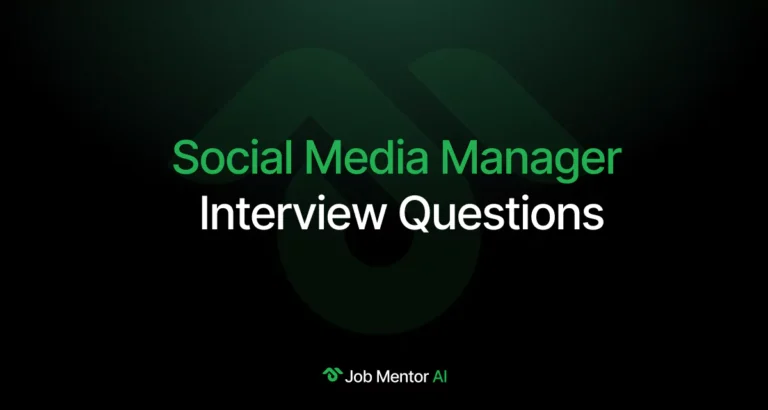
Social Media Manager Interview Questions

Top 30 Network Administrator Interview Questions You Must Prepare
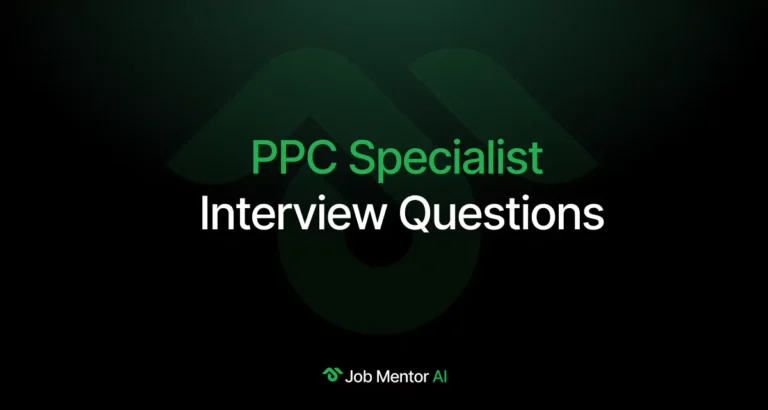
PPC Specialist Interview Question Bank
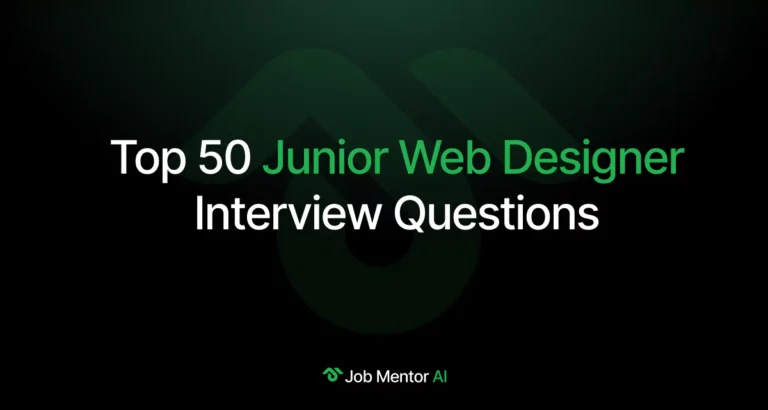
Junior Web Designer Interview Questions

Frontend Developer Interview Questions


